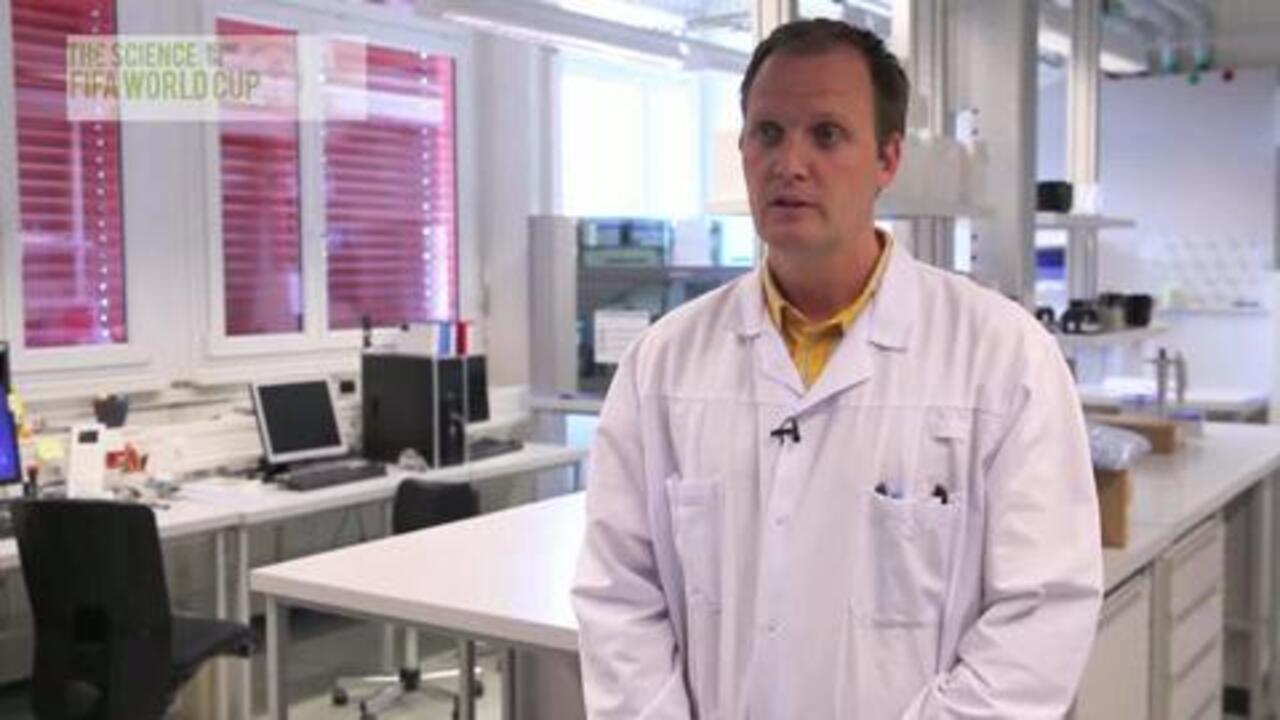Search Thermo Fisher Scientific
レトロスペクティブ分析によるドーピングコントロール

A powerful strike against cheaters
While the approach of targeted screening for prohibited compounds or their metabolites in an athlete’s blood or urine sample is an effective approach to monitor athletes, it has its limitations. Comprehensive screening of known and unknown performance enhancing substances is a critical part of maintaining sports true. Along with competing comes the pressure to maintain a winning status year after year. With new, modified or designer drug substances reportedly misused by athletes, anti-doping agencies and laboratories seek new detection strategies to combat these emerging threats.
Answer your most challenging sport testing applications with our high-performance GC-MS & GC-MS/MS systems.
Whether you require high throughput, highly sensitive quantitative performance or screening solutions to retrospectively answer tomorrows doping questions, we have you covered.
サンプル調整は、分析ワークフローの重要なステップです。 Our solutions include a multitude of consumables and automated platforms to enable fast, reproducible and easy sample preparation.
To ensure athletes play true, our market-leading solutions help you profile athletes and confirm steroid use with precision and sensitivity.
Support in and out of competition testing with solutions to screen large sets of compounds in a single methods approach, while staying ahead of future banned substances.
Confirm the presence of synthetic forms of endogenous anabolic androgenic steroids (EAAS) in urine samples.
Retrospective sample analysis which includes simply reprocessing data that was collected prior to confirm compounds in previously analyzed samples adds tremendous value in keeping methods up to date on current substances and identifying unknown compounds. Retrospective sample analysis is also useful for athlete biological passport purposes, where each sample can be reanalyzed to identify various markers of drug metabolism in each athlete. Thermo Fisher Scientific partners with you to develop full scan methods with powerful orbitrap instruments which can screen your large sets of compounds while staying ahead of future banned substances.
Your samples are precious and so is your time! Samples come in different shapes and form and so choose the right sample preparation method and products to improve your ability to identify unknown substances and reduce workflow bottlenecks. Don’t let the first step in your analysis impact the results you get from your analytical workflow whether it is hydrolysis or derivitization step. We have the answers for you. Let us help you achieve your goals on time and on budget
Access the handbook to learn more about the variety of forensic toxicology and sport doping sample preparation options available to you.
Sports testing laboratories rely on a variety of mass spectrometry based workflows to test for various WADA classes of prohibited substances and unknown profiling and retrospective screening. Below is a comparative table of the various techniques. As technologies advance with increased performance, we continue to see a shift in platforms used.
Which mass spectrometer is right for you?
* not all applications may require nanoHPLC
TraceFinder software offers the most comprehensive and quantitative workflows to help you address critical challenges in your routine or advanced quantitation assays.
Software with advanced algorithms help you discover novel compounds with confidence while simplifying their identification and structural elucidation.
Your samples are precious and so is your time! Samples come in different shapes and form and so choose the right sample preparation method and products to improve your ability to identify unknown substances and reduce workflow bottlenecks. Don’t let the first step in your analysis impact the results you get from your analytical workflow whether it is hydrolysis or derivitization step. We have the answers for you. Let us help you achieve your goals on time and on budget
Access the handbook to learn more about the variety of forensic toxicology and sport doping sample preparation options available to you.
Sports testing laboratories rely on a variety of mass spectrometry based workflows to test for various WADA classes of prohibited substances and unknown profiling and retrospective screening. Below is a comparative table of the various techniques. As technologies advance with increased performance, we continue to see a shift in platforms used.
Which mass spectrometer is right for you?
* not all applications may require nanoHPLC
TraceFinder software offers the most comprehensive and quantitative workflows to help you address critical challenges in your routine or advanced quantitation assays.
Software with advanced algorithms help you discover novel compounds with confidence while simplifying their identification and structural elucidation.
Clinical Research and Forensics Handbook
In our latest application handbook, we provide access to sports antidoping and forensic drug chemistry applications, peer reviewed references and recent technical posters for a wide range of experimental techniques, including mass spectrometry (including single quadrupole, triple quadrupole and quantitative high resolution systems), liquid chromatography and a variety of sample prep solutions.
Dr. Norbert Baume with Laboratorie Suisse d’Analyse du Dopage (LAD) talks about how he uses high resolution mass spectrometry for targeted and unknown screening. Discover how scientists are using LC-MS technology for accurate anti-doping testing of the world’s top footballers.
In this webinar Dr. Alessandro Casilli, Brazilian Laboratory for Doping Control, recent advances in high resolution accurate mass (HRAM-MS) Orbitrap technology for measuring different ionization modes during the same run, and improving specificity and detection limits in sports doping control analyses.














